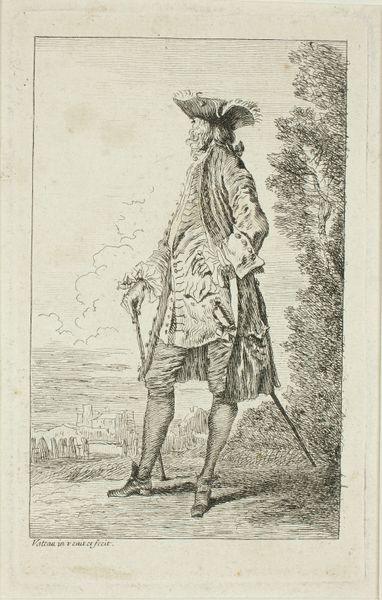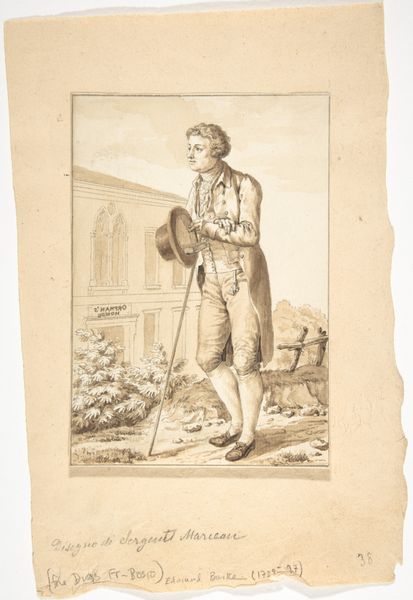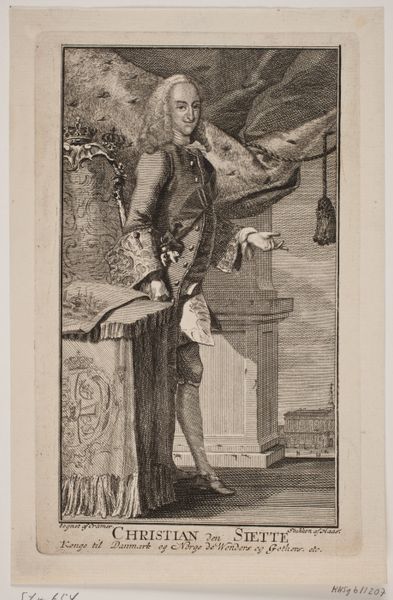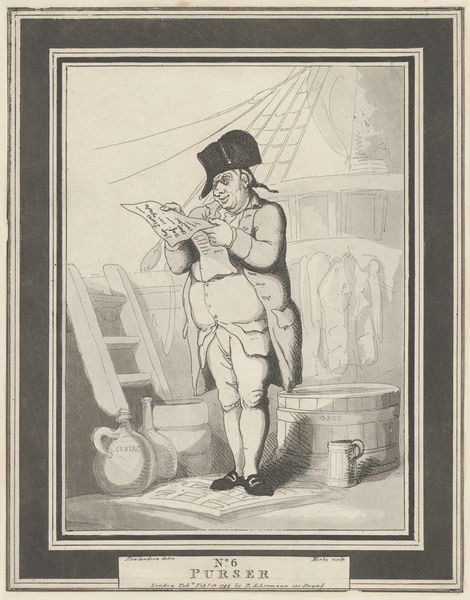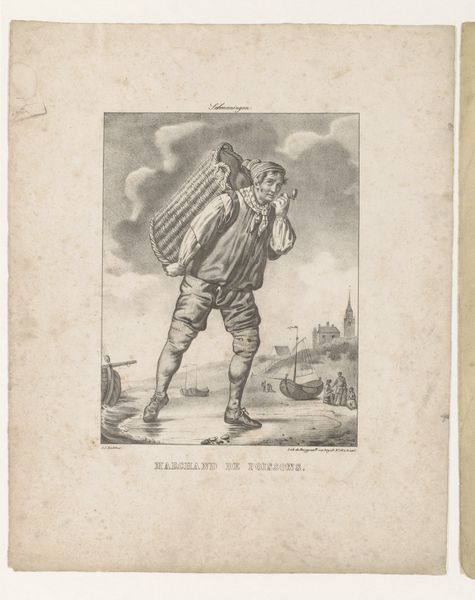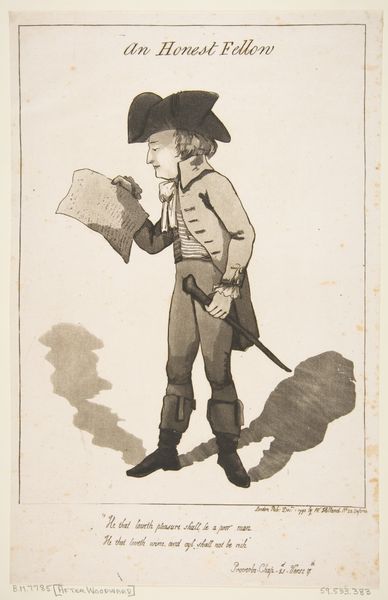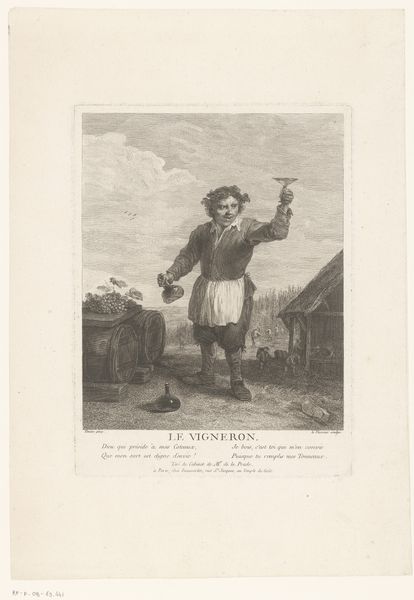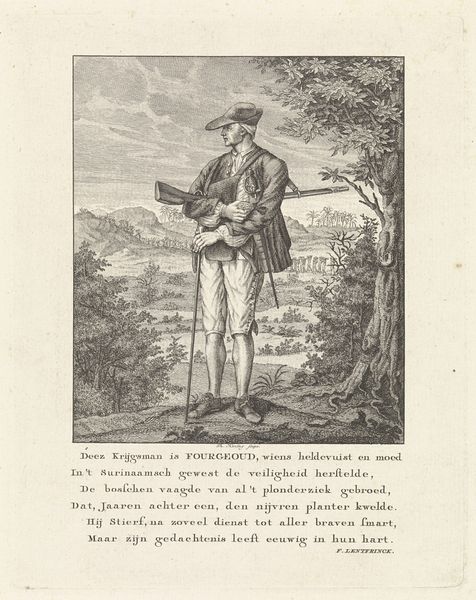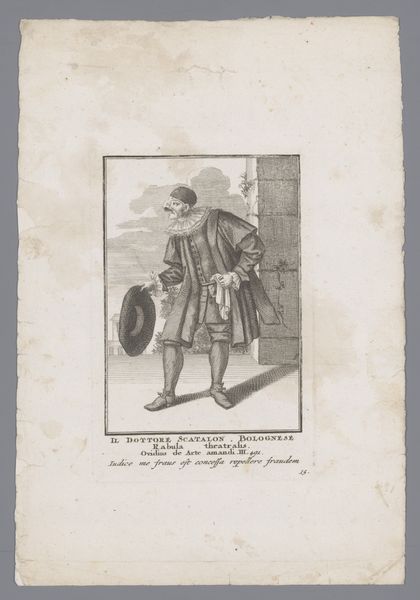
drawing, print, engraving
#
portrait
#
drawing
#
baroque
# print
#
genre-painting
#
engraving
Dimensions: Sheet: 9 15/16 x 7 5/8 in. (25.2 x 19.4 cm) Plate: 8 11/16 x 6 5/16 in. (22 x 16 cm)
Copyright: Public Domain
Editor: This is "Standing Man Holding Kettles," an engraving from between 1720 and 1800, at The Met. The detail is so delicate. The way the artist rendered his clothing really captures the fabric. What strikes you about this piece? Curator: What intrigues me is the material reality being depicted. Look at those kettles: how would they have been produced? Consider the labor, the resources, and the social context involved in making those kettles accessible to this man. Is he selling them or using them? What does it mean to depict him, specifically, in proximity to those things? Editor: It’s interesting you focus on the kettles. I was drawn more to the classical architecture in the background; to me, that suggested the artist was aiming for a sense of elevated portraiture. Curator: I don't disagree, but what happens if we place equal weight on both elements, high art and everyday object? This piece can also show a societal hierarchy – does this individual have to be closer to manual labour to attain resources in society? Consider how the material reality of kettles intertwines with this ideal of “high art.” Are those really separate concepts at this moment? Editor: So, you’re saying the kettles themselves are part of the commentary, not just incidental? By focusing on their creation, labor, and possible uses, they are important carriers of the message? Curator: Exactly. The value is in unpacking how art objects reflected material processes, which in turn can open broader considerations, in this case the social stratification evident in even a seemingly straightforward portrait. Editor: I never thought of it that way, seeing it through the lens of material production. That makes me rethink not just the art object itself but how people related to these types of everyday things during this period. Curator: Precisely. Questioning boundaries between what’s valued and what’s dismissed in both art and life leads to insightful perspectives.
Comments
No comments
Be the first to comment and join the conversation on the ultimate creative platform.
